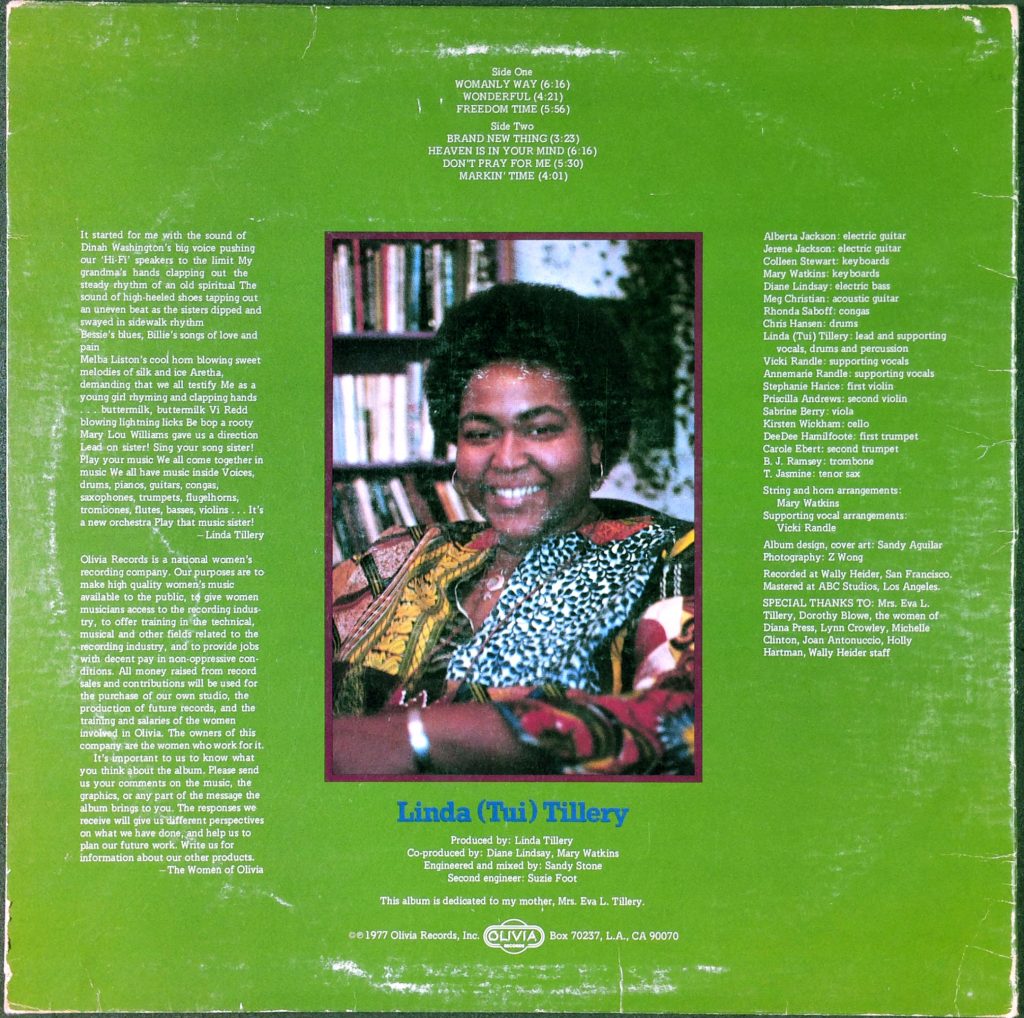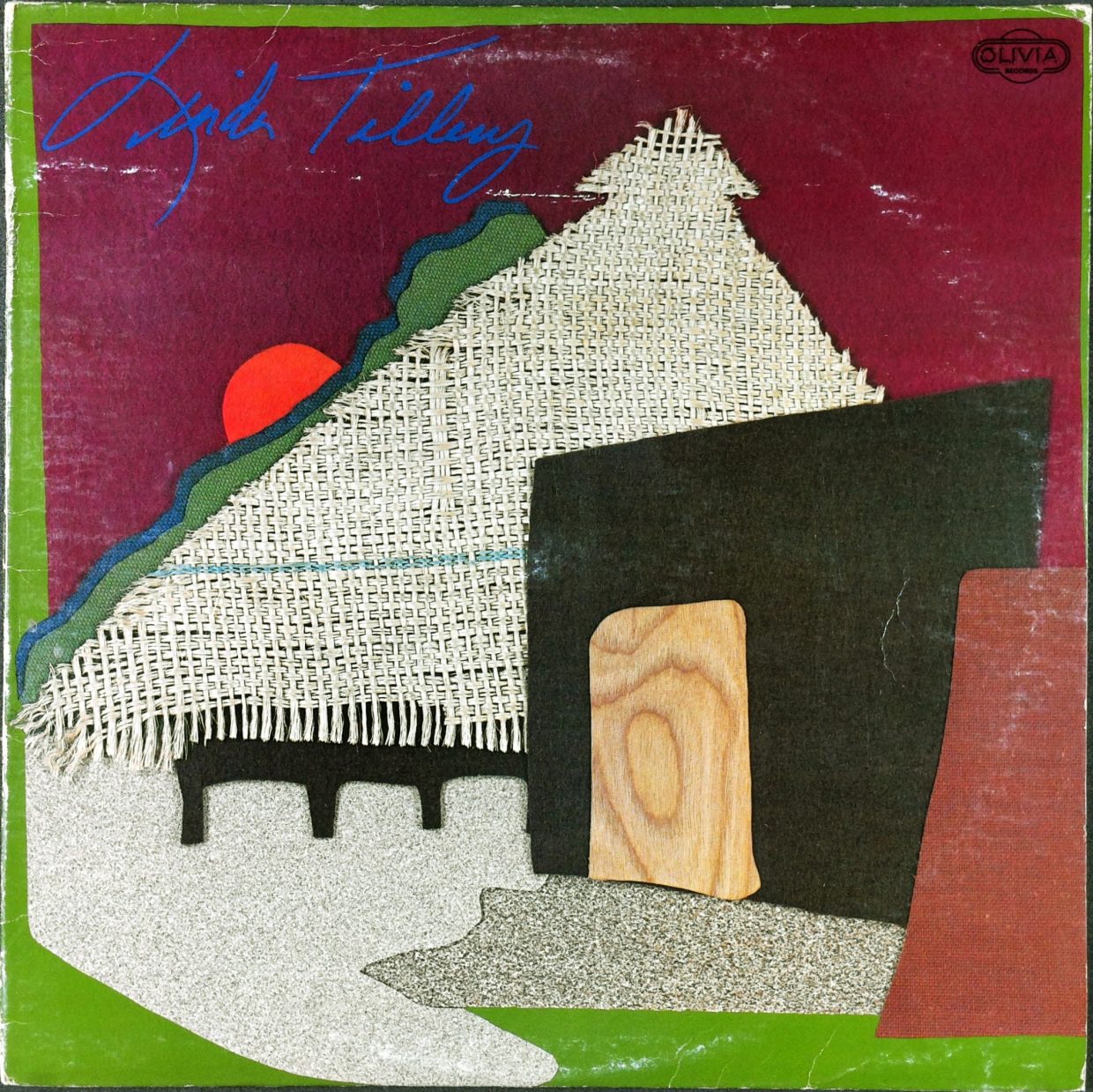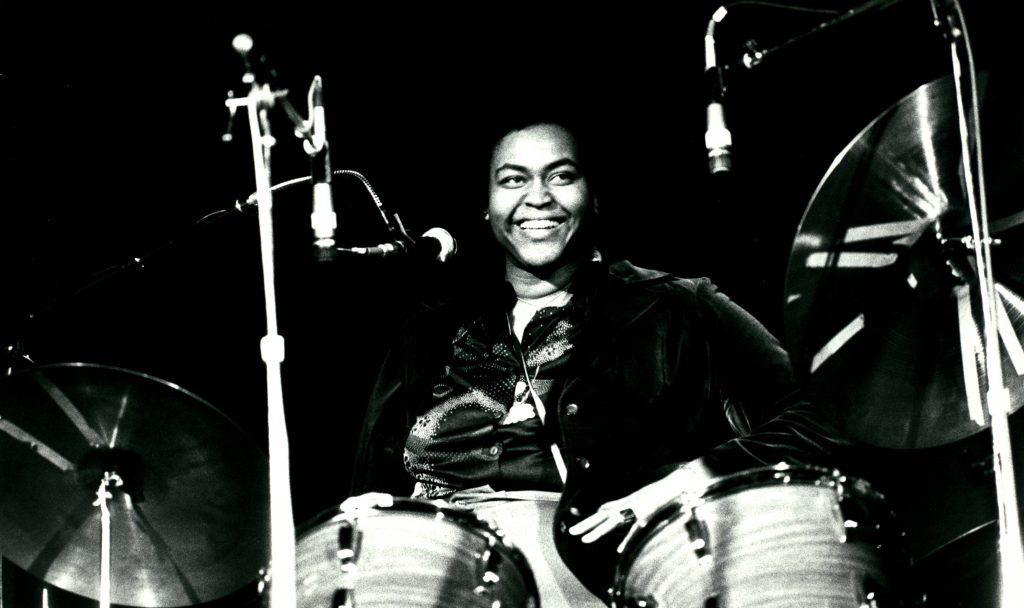Linda Tillery liner notes, 1977, Olivia Records. Sophia Smith Collection, Women’s Music Archives records and collected music.

Linda Tillery album back, 1977, Olivia Records. Sophia Smith Collection, Women’s Music Archives records and collected music.
In 1977, Olivia released Linda Tillery’s self-titled album. A well-known R&B musician in the Bay Area, Linda Tillery–who had worked with Olivia as a producer on BeBe K’Roche and The Ways a Woman Can Be–had previously put out a few albums with more mainstream labels. However, they hadn’t sold that well, she wasn’t getting a fair deal in the contract she had with the labels and her manager, and she was afraid she would have to remain closeted if she continued down the mainstream track. 1.
Tillery joined the Olivia living collective in 1976, and the Olivia women moved their entire operation to Oakland and the Bay Area soon after.
With Linda Tillery, she was able to create and produce her own music. This album was another important step for Olivia in broadening the representations of women’s music–they were finally centering Black voices and styles of music.
A biographical statement from Olivia states, “Linda sees herself as having double responsibilities as a musician. She feels strongly that as a black woman she must struggle against a double oppression. She hopes that her music will give strength to other women as they too strive to attain the freedom that comes when restrictions based on race and sex are eliminated. Linda puts it this way: “[…] We are hoping that as a band we can present a different image, a way for women to see the needs of working together and supporting each other.” 2

